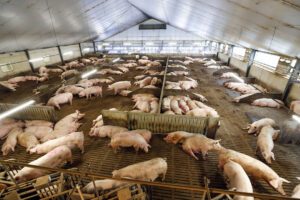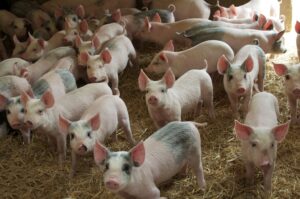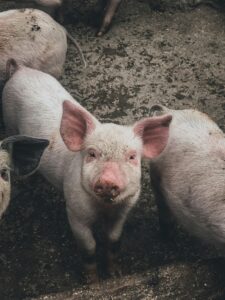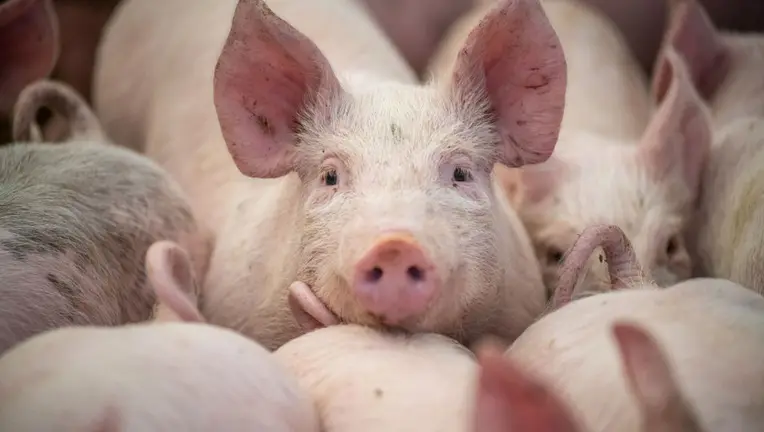Navigating the Health Challenges in Pig Farming

In the realm of pig farming, ensuring the well-being of the livestock is paramount. One of the significant challenges faced by pig farmers is the prevalence of pig diseases that can adversely affect the entire population. Recognizing the warning signs of these diseases and implementing effective preventive measures are essential for maintaining a healthy pig herd. This section explores common pig diseases, their warning signs, and proactive strategies for prevention, enabling farmers to sustain their farming operations successfully.
Common Pig Diseases: Identifying the Culprits
1. African Swine Fever (ASF):
A highly contagious viral disease, ASF can devastate pig populations. Common symptoms include high fever, loss of appetite, and skin discoloration. Infected pigs may exhibit respiratory distress and discharges from the eyes and nose.
2. Foot-and-Mouth Disease (FMD):
FMD is characterized by fever, blister-like sores on the feet, mouth, and snout, leading to excessive salivation and difficulty in eating. It spreads rapidly, affecting pigs’ mobility and overall health.
3. Swine Influenza:
Similar to human influenza, swine influenza causes coughing, sneezing, nasal discharge, and fever in pigs. Infected pigs may experience reduced appetite and lethargy.
4. Porcine Reproductive and Respiratory Syndrome (PRRS):
PRRS affects the reproductive and respiratory systems of pigs. Symptoms include reproductive failures, difficulty breathing, coughing, and fever. Infected sows may experience late-term abortions.
5. Classical Swine Fever (CSF):
CSF, also known as hog cholera, causes high fever, loss of appetite, and skin hemorrhages. Infected pigs may exhibit neurological symptoms, leading to difficulty in coordination and trembling.
Warning Signs of Pig Diseases: Recognizing the Red Flags

- Unexplained Weight Loss: Rapid weight loss in pigs is a significant indicator of underlying health issues.
- Lethargy and Weakness: Pigs appearing unusually lethargic, weak, or reluctant to move may be suffering from an illness.
- Respiratory Distress: Labored breathing, coughing, or nasal discharges are signs of respiratory infections.
- Changes in Eating Habits: A sudden decrease in appetite or refusal to eat indicates health problems.
- Skin Abnormalities: Skin discoloration, rashes, or lesions can signal various pig diseases.
- Reproductive Issues: Infertility, abortions, or stillborn piglets may indicate reproductive diseases.
Preventive Measures: Safeguarding Your Pig Herd
1. Biosecurity Measures:
- Restricted Access: Limit access to the pig farm to authorized personnel only, preventing the entry of potential disease carriers.
- Quarantine Protocols: Quarantine new pigs before introducing them to the existing herd, allowing time for observation and testing.
- Cleaning and Disinfection: Regularly clean and disinfect facilities, equipment, and vehicles to minimize disease transmission.
2. Vaccination Programs:
- Consultation with Veterinarians: Collaborate with veterinarians to develop customized vaccination schedules tailored to the farm’s specific needs.
- Regular Vaccination: Adhere to the recommended vaccination schedules to enhance pigs’ immunity against prevalent pig diseases.
3. Monitoring and Surveillance:
- Regular Health Checks: Implement routine health checks, enabling early detection of any signs of illness.
- Record Keeping: Maintain comprehensive records of pig health, vaccinations, and any observed symptoms, aiding in disease tracking and management.
4. Proper Nutrition and Hygiene:
- Balanced Diet: Provide a well-balanced and nutritious diet to strengthen pigs’ immune systems, enhancing their ability to fight off infections.
- Clean Water Supply: Ensure a clean and uncontaminated water supply, as dehydration can exacerbate the effects of pig diseases.
Conclusion

In the dynamic world of pig farming, recognizing the warning signs of pig diseases and implementing effective preventive measures are indispensable. By adopting a holistic approach encompassing biosecurity, vaccination, monitoring, and proper nutrition, pig farmers can safeguard their herds against potential health threats. Regular collaboration with veterinarians and a proactive attitude towards disease prevention empower farmers to maintain a healthy and thriving pig population, ensuring the long-term sustainability of their farming endeavors. Through these proactive efforts, pig farmers can contribute positively to the agricultural industry while reaping the rewards of a prosperous and sustainable farming operation.
Written by: Nicolene Oosthuizen

